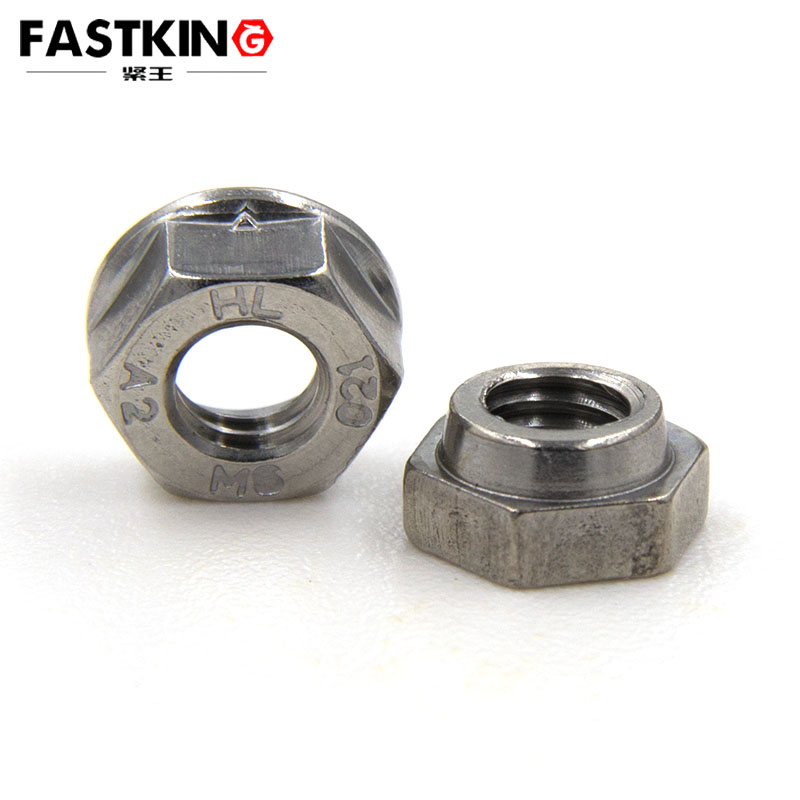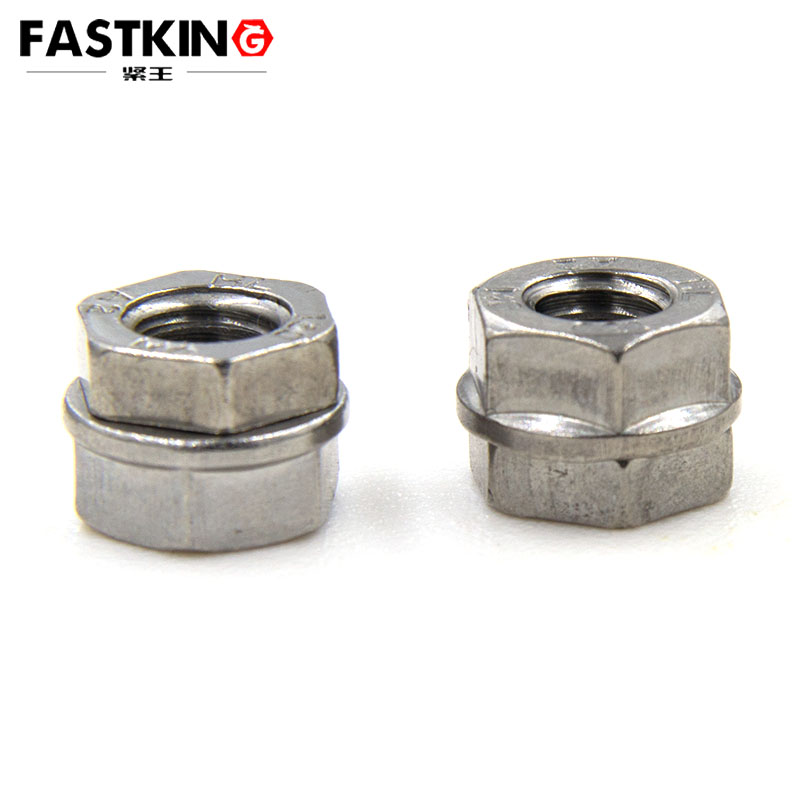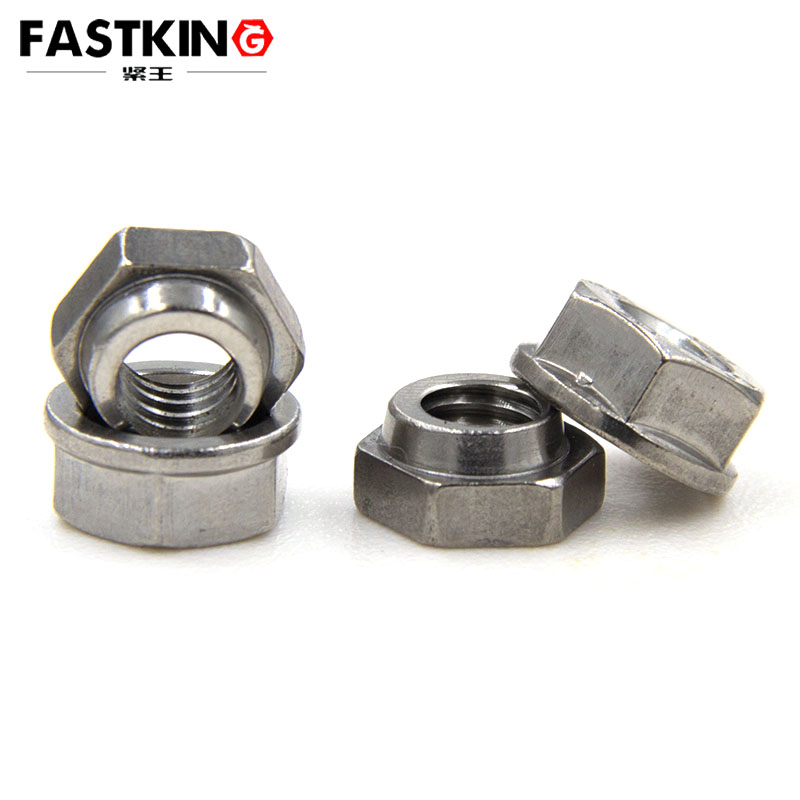Eccentric nuts, as special fasteners, play a crucial role in modern mechanical assembly and engineering applications. Unlike conventional nuts, eccentric nuts feature a designed offset between their central axis and thread axis. This unique design enables them to solve assembly challenges that standard fasteners cannot address. Typically manufactured from high-strength alloy steel or stainless steel, eccentric nuts undergo surface treatments like zinc plating or black oxide coating to ensure durability in various environments.

The defining characteristic of eccentric nuts lies in their "eccentric" design. This structure allows the nut to generate minute radial displacement during rotation, facilitating precise positional adjustment of connected components. Based on eccentricity direction, these nuts are categorized into two fundamental types: unidirectional eccentric nuts (providing adjustment capability in one direction) and bidirectional eccentric nuts (enabling fine-tuning in two perpendicular directions), offering greater assembly flexibility.
II. Application Scenarios of Eccentric Nuts
Mechanical Manufacturing Sector
In mechanical manufacturing, eccentric nuts are extensively used in precision alignment applications. For instance:
- Machine tool guide rail installation: Compensates for minor misalignment between rails and bases caused by machining tolerances
- Large gearbox assembly: Effectively compensates for slight gear axis deviations, reducing impact and noise during meshing
The automotive industry represents another significant application area:
- Suspension system assembly: Adjusts wheel camber and toe angles for driving stability and even tire wear
- Wheel alignment: Modern repair shops commonly use adjustment bolts with eccentric nuts for precise four-wheel alignment
Construction Engineering Field
In steel structure buildings:
- Beam-column connections: Solves micro-adjustment challenges at joints, replacing traditional methods like reaming or shimming
- Enables millimeter-range positional adjustment through simple nut rotation, significantly improving construction efficiency
Curtain wall installation:
- Accommodates centimeter-level structural tolerances in mounting facade elements
- Three-dimensional adjustment capability ensures surface flatness and uniform joints while absorbing structural deformation
Rail Transportation Sector
High-speed rail systems:
- Special eccentric nuts connect track slabs to concrete foundations
- Enables 0.1mm-precision adjustment of track elevation and alignment
- Ensures smooth operation and extends track system lifespan
Subway tunnel construction:
- Facilitates precise segment alignment during shield tunneling
- Maintains tunnel axis accuracy and joint waterproofing performance
Home Appliances and Electronics

Household appliances:
- Washing machines: Optimizes drum concentricity to reduce operational noise
- TV wall mounts: Simplifies horizontal and vertical positioning adjustments
Electronic devices:
CPU cooler installation: Ensures perfect contact with chip surfaces
Compensates for mounting hole tolerances while maintaining even pressure distribution
III. Usage Methods for Eccentric Nuts
Pre-installation Preparation
Key preparation steps include:
Selecting appropriate nut type/specification based on application requirements
Inspecting thread conditions for damage or corrosion
Cleaning connection surfaces to remove contaminants
Using torque wrenches for critical connections
Installation Procedures
Standard installation process:
Insert bolt through mounting hole
Hand-tighten eccentric nut partially
Use tools to rotate nut for positional adjustment
Implement "coarse-fine" two-stage adjustment approach
Follow directional adjustment sequence (primary then secondary)
Adjustment Techniques
Critical adjustment considerations:
Verify eccentric direction and magnitude (via markings or measurement)
Understand nonlinear rotation-displacement relationship
Avoid over-rotation to prevent thread damage
Note actual displacement direction may differ from expectation
Maintain adjustment records for critical applications
Tightening and Anti-loosening
Final tightening requirements:
Apply specified torque values (avoid under/over-tightening)
Implement anti-loosening measures for vibrating environments:
Lock washers
Thread-locking compounds

Double-nut configurations
Consider thermal expansion for high-temperature applications
Apply tamper-evident marks for permanent installations
Maintenance and Inspection
Routine maintenance protocols:
Regular checks for loosening or thread damage
Periodic cleaning and relubrication for exposed nuts
Immediate readjustment upon detecting looseness
Replacement of worn components
Professional operation for specialized equipment
IV. Conclusion
Eccentric nuts serve as precision mechanical adjustment elements, offering simple yet effective solutions across engineering applications. From large-scale structures to microelectronics, their applications continue to expand. Proper understanding of working principles and mastery of installation techniques can maximize their technical advantages, enhancing assembly quality and operational efficiency. With advancing manufacturing technologies, future eccentric nuts will achieve greater precision and reliability, playing an increasingly significant role in intelligent manufacturing and precision engineering.
